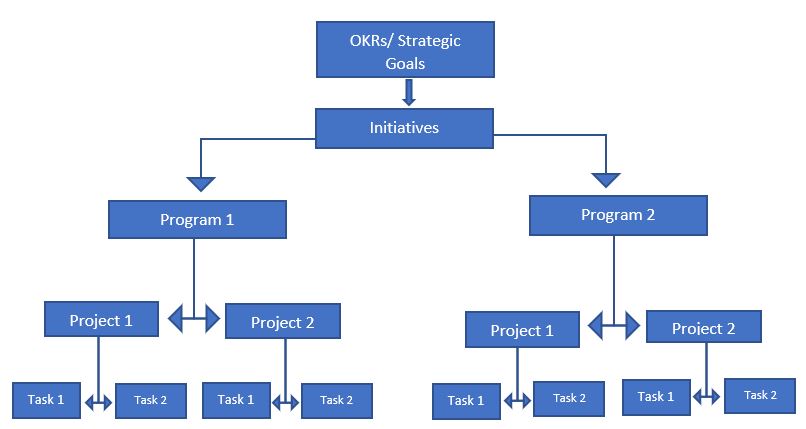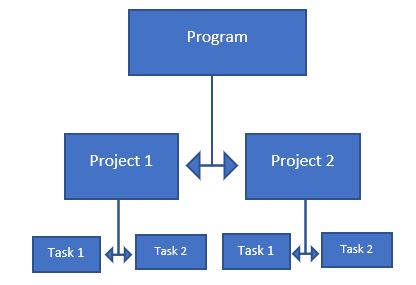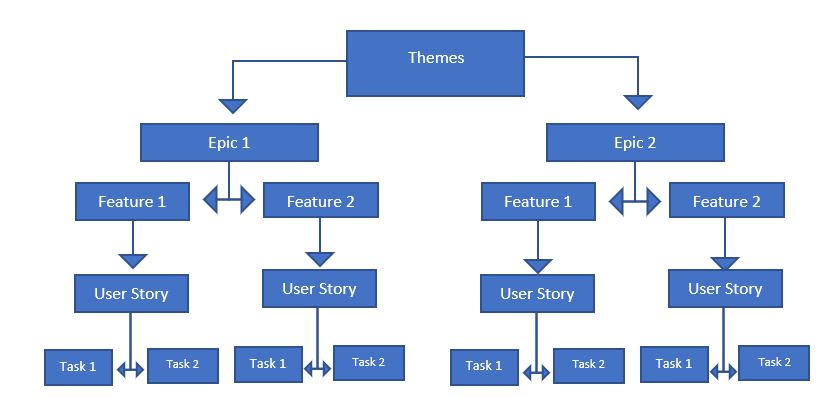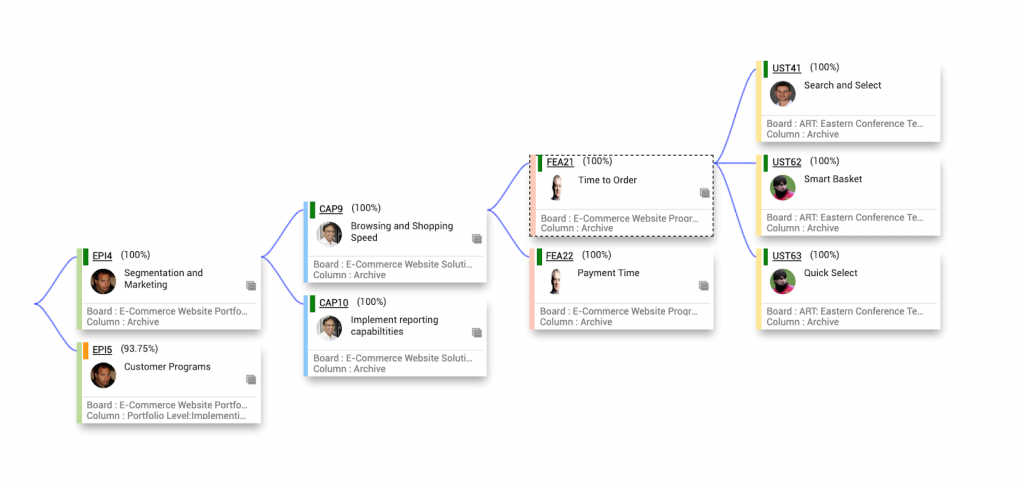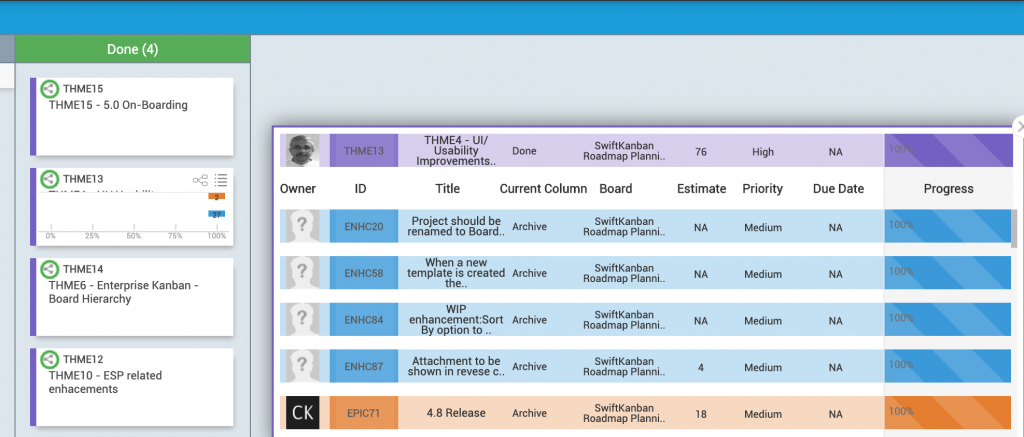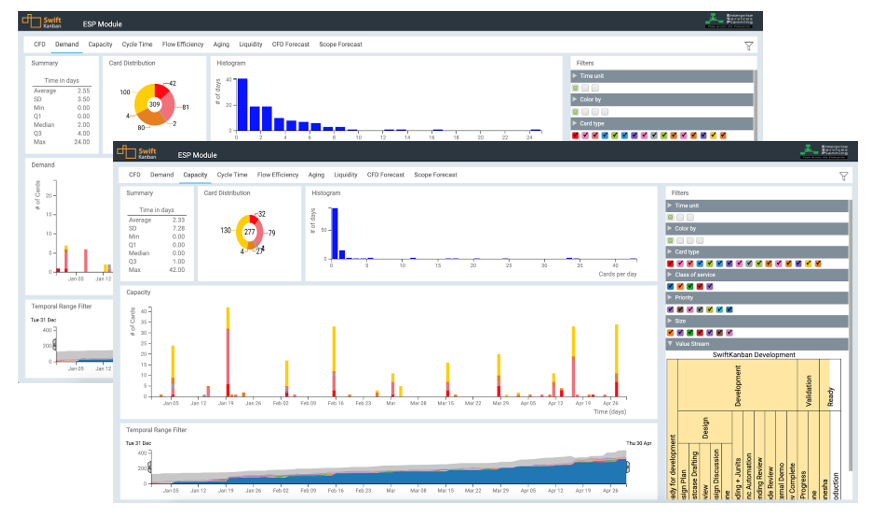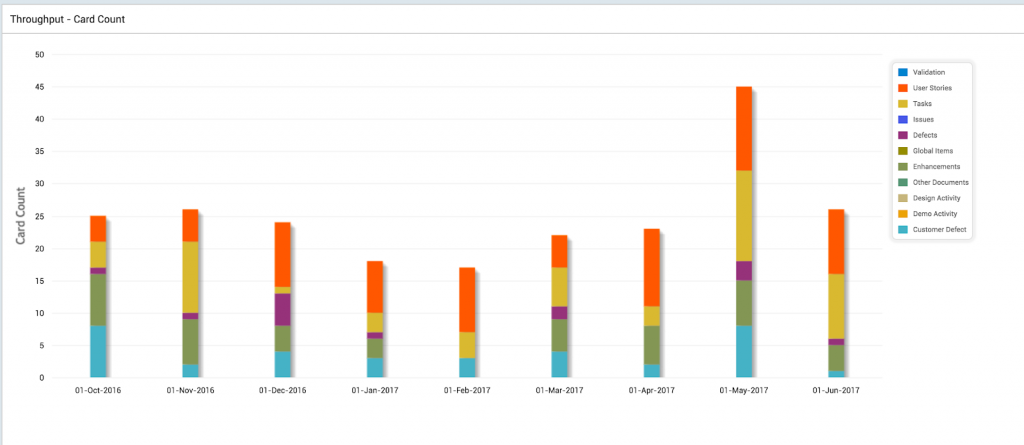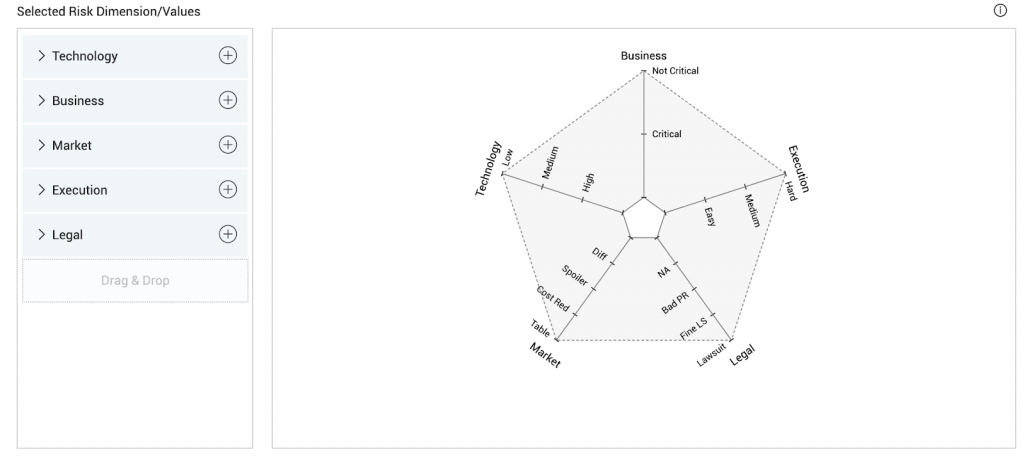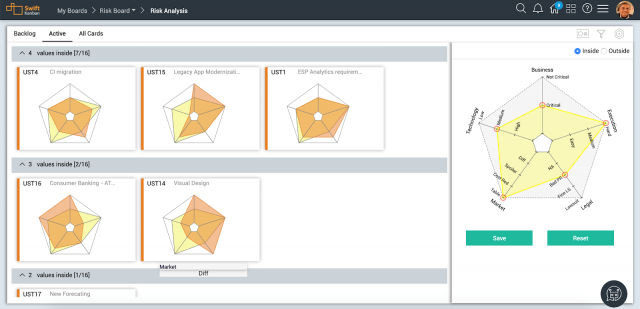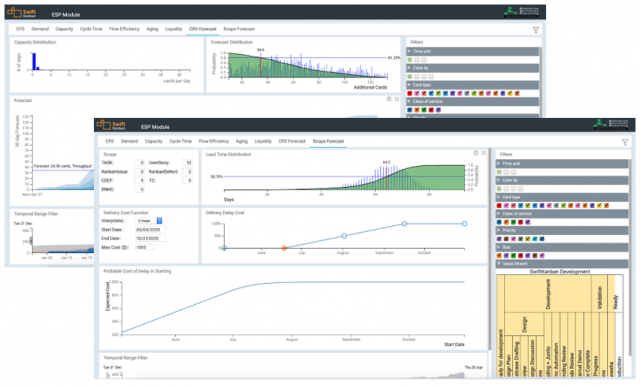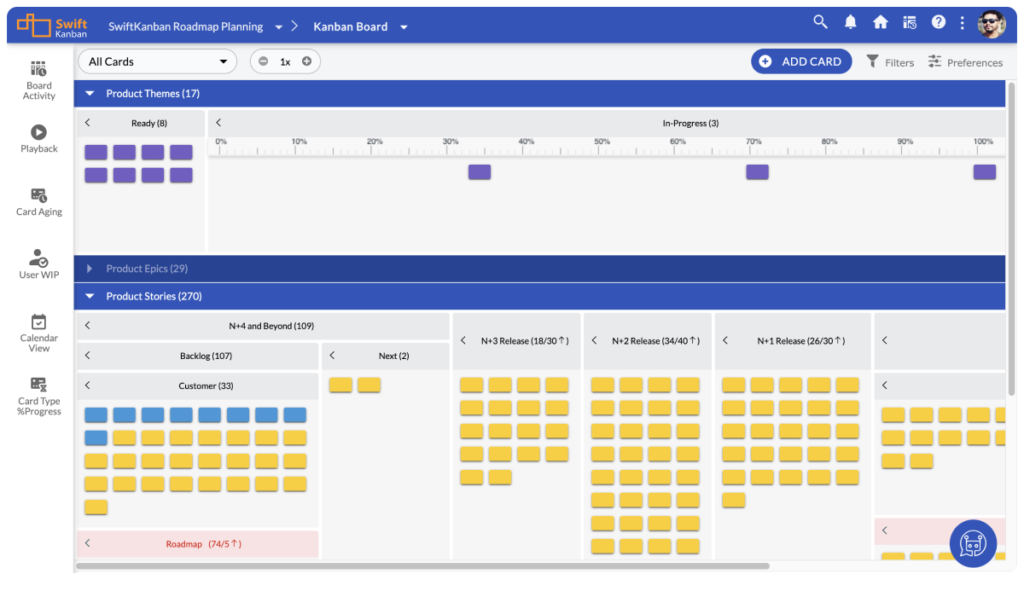Scale Agility in the Enterprise!

Enterprise/ Portfolio Kanban
Kanban has a natural ability to support Portfolio Management. Kanban can be applied to any level of an organization’s workflow – from Strategic Objectives/ OKRs to the Programs or Initiatives that support them, down to the Projects and Tasks that need to be executed to achieve those Objectives or OKRs. At each level of the hierarchy, a Kanban Board can be used to manage those OKRs, Initiatives, Projects and the Tasks.
Kanban applied to Portfolio Management is often referred to as Portfolio Kanban or Visual Portfolio Management. You can learn more about Portfolio Kanban here in our Kanban Guide.
Besides planning and tracking the strategic initiatives, programs and projects, Portfolio Management also deals with Resource Management/ Allocation/ Reservation, Risk Management, Balancing Demand and Capacity/ Capability and so forth, to ensure that at an organizational level the leadership is prioritizing the right programs and projects, based on the information they need for these projects.
Using the extensive visualization hierarchy modeling in Kanban and combining it with the statistical modeling and forecasting capabilities of Enterprise Services Planning in SwiftESP, you can manage your portfolio of products, projects and services in a powerful, effective and yet, simple and efficient way!
Once your teams start using Kanban, you get insights into the capability and capacity of each team or each service your organization provides. Using this data, you can do a variety of things related to Portfolio Management.
SwiftKanban: the best Portfolio Kanban Tool!
SwiftKanban provides several important features needed by organizations to support Portfolio Management practices visually, elegantly and most important of all, with actionable insights for both leadership and teams to be in sync about all the work that needs to be done or is being done.
SwiftKanban’s Portfolio Management features can be grouped into the following categories –
-
Portfolio Modeling
-
Portfolio Tracking and Management
-
Demand Assessment/ Shaping
-
Opportunity & Risk Assessment, and Portfolio Prioritization
-
Scope and Schedule Forecasting

Portfolio Modeling
SwiftKanban supports all of these models with a flexible Card Hierarchy that can be set up within one board or across multiple boards.
Each entity in a hierarchy – such as OKR – Initiative – Program – Project – can be modeled as a card-type in SwiftKanban. These card types can then be linked in Parent-Child hierarchy templates at the account level. You can also choose which card type can be linked to others and by what kind of relationship.
Once a template is defined, it can be used, you can use it to define links between cards on the same board or across multiple different boards.
Using a combination of Card Hierarchy and multiple boards, you can create a powerful and flexible Portfolio Model or a Work Hierarchy as needed, in minutes!
Portfolio Lane
SwiftKanban has a unique type of swim lane, the Portfolio lane, that helps you visualize and track progress of parent-level cards in terms of % completion progress, as well as move the cards in the Portfolio lane automatically!
The Portfolio Lane allows for multiple ways to calculate the % progress of cards moving in the lane, which you can select at the time of setting up the lane. Based on the selected criterion for % progress, these parent-level cards automatically advance in the Portfolio Lane, visually indicating their progress to portfolio managers.
SwiftKanban lets you model sophisticated processes, where a card’s progress is not only measured by the progress of its child cards’ progress, but other attributes as well such as the card’s own To-Do’s or Effort completion.

Percent Progress Column
You can also define a specific column of a default (non-portfolio) Swimlane to be a Percent Progress Column in SwiftKanban. If any of the stages of your value-stream or lane requires a card to be managed and moved based on portfolio, then you can simply convert that stage or column into a Percent Progress Column.
(For more information, please visit this page: https://www.digite.com/knowledge-base/swiftkanban/article/working-with-percent-progress-column/)
Progress Drilldown
The Card Hierarchy progress bar provides a visual indication of how much progress has been made by a card’s children. You can click on the link to see the drill-down view of child cards and their progress status – at both both summary and detail levels. Once the progress bar is completely green, you know that the parent card is ready to move to the next stage.
In the card hierarchy, you also get full status information on which cards are in progress or completed – and on which board they are located. Using these you get a powerful capability to manage your portfolios of strategic or operational importance much more easily and effectively than conventional portfolio management tools that are far more data intensive and complex to operate and use.
Demand Assessment/ Shaping
Using the Enterprise Services Planning module of SwiftKanban, you can do dynamic what-if analysis on a rich variety of data, using your Kanban system’s past performance data.
The SwiftESP module provides powerful analysis and visualization of your service’s demand and capacity profile.
Using the filters panel, you can get a clear picture of the inflow of demand – both value demand and failure demand – on your team. You can further drill down on specific parts of the value stream and understand the flow of demand on different teams involved in the overall value stream and their capability to deliver on that demand.
Using this information, you can then take it further to assess and shape the overall demand for your team to work on, using the Risk Assessment functionality of SwiftESP.
Capacity Measurement and Booking/ Allocation Planning
Using SwiftESP as well as the standard flow analytics of the system, managers can understand what capacity is available for each planning time period and define a Planning Kanban board to book capacity of a specific service or a team. This booking/ allocation can be done for multiple services or teams on a single board for ease of planning and decision making.
SwiftKanban’s throughput or velocity charts provide an easy way to determine service capacity – as also SwiftESP’s Capacity analysis. These can also break down the capacity by different attributes such as work type, size or class of service.
With this analysis available, it becomes easy for management to plan and allocate capacity to different initiatives or products/ projects. This can be done on a simple board that reflects the planning style of the organization, from quarterly to monthly level of planning.
Opportunity & Risk Assessment, and Portfolio Prioritization
This opportunity and risk assessment can be applied to any category and level of work, from the highest level strategic OKRs and objectives that impact multiple products or programs, to the lower-level epics or features for a specific product for making data-based decisions easily.
Scope and Schedule Forecasting
Defining WIP Limit for Resources
Explore Other SwiftKanban Features
Team Kanban
Roadmap
Business Rules
Kanban Integrations
Backlog Management
Scrumban
Kanban Analytics
SwiftESP
Team Collaboration
Enterprise Portfolio Kanban
Enterprise Services Planning with Kanban
Visualize your workflow and manage your work in an Easy and Intuitive way.
Try our Enterprise Plan FREE for 30 days.

